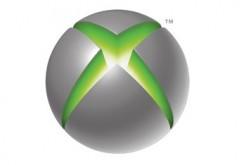By Scott Bowers Microsoft has announced that the date of the “
Xbox Reveal” will be at a special event on May 21. This is the first official announcement from them regarding their new upcoming console. But just because Microsoft’s not saying a lot about the upcoming Xbox 720 – code-named “Durango” -- doesn’t mean gamers are in a wait-and-see mood. After all, if nature fills vacuums, then the gaming community argues rumors. And so many rumors have been floating around about the Xbox that it’s worth taking the time to sort through them to see which of them make the most sense. Here’s my favorite rumors, and the reality I think is behind them.
 The CPU/GPU
The CPU/GPU
Rumors are that the new Xbox will further extend AMD’s penetration into the world of game consoles. Coupled with Sony’s use of x86 AMD technology in the PS4, it’s turning out to be a good year for AMD, which has been struggling to keep up with Intel in the dwindling market for PCs. It should also be good news for developers, since it would streamline the creation of cross-platform games.
According to Eurogamer, the 720 will run on an 8-core CPU running at 1.6GHz, an 800MHz DirectX 11 GPU and 8GB of DDR3 memory. It will be capable of displaying 1080p 3D content, support up to 7.1 channels of audio, and have built-in Wi-Fi.
Kinect 2.0
When it first appeared in 2010, the Kinect was a close-to-instant hit with gamers, but not so much with developers, who’ve been leery of building games around because of its status as an optional feature. The fact that Kinect’s not part-and-parcel of the Xbox experience limited their potential audience, and many of the games were built around the device suffered from the same problems that many Wii games did: They were shallow and better at entertaining a group of people at a party where short game sessions occur. Though more developers have created features for the peripheral, few have built them as integral parts of the game. This time around it seems that the next-generation Kinect will be included with every Xbox sold. In addition, rumor has it that it must be plugged in and calibrated for the Xbox to even function. This may annoy some people who just want to plug and play wherever they want, but it will have a massive impact on developers, who’ll now be able to program every game with the peripheral in mind. The cameras in the new Kinect will be quite a bit more capable than before. The Kinect makes a “skeleton” out of the people that it’s tracking, essentially
building a stick figure, so that it can read body movements. The original Kinect could only track two skeletons at a time, the new version will be able to track up to six at all times. This will allow better interaction with groups, the camera’s higher resolution will allow much deeper body tracking. The higher resolution will also allow the system to independently track your thumbs, whether your hand is open or closed, and even read your expression to determine whether you’re angry, sad or excited. And, its facial recognition will be able to automatically identify who’s playing. Finally, the new Kinect will take advantage of a much-improved viewing angle, thus addressing one of users’ biggest complaints. No longer will you have to push coffee tables around in order to play, and gamers dwelling in Because of how far back you had to be from the camera, most people needed to push coffee tables around and rearrange their game space just to be able to play the games
Used Games
One of the oldest rumors for the Durango is the one that Microsoft intends to incorporate some sort of technology that can detect used games. It’s not clear if that means that the system would prohibit the use of used/traded games or how such a thing would be implemented. But if it were possible, Microsoft would gain huge brownie points from game publishers that are tired of seeing retailers like GameStop cheer about their revenues from the sale of used games. At the same time there are many budget-minded gamers who wouldn’t share the optimism of not being able to get their games at a slight discount from the ever-rising price of retail games.
Complete Media Center Functionality
Ever since Windows XP Media Center Edition in 2002, Microsoft has been trying to get you to put a PC in your living room. They haven’t had amazing success, but they’re looking to try harder than ever with the Durango. The console will take a cable box signal and pass it through to the Xbox via HDMI, this will allow the console to overlay its own UI and features. Finally a fix to the speed and horribly designed interfaces from normal cable boxes. The Kinect 2.0 may also add functionality to the Media Center. The Kinect will be able to detect eye movement and have the ability to automatically pause content if a viewer gets up or turns their head away from the TV.
Online Connection Required
By far the most controversial rumor is that the next Xbox will require a connection to the internet at all times. This one has caused waves of chatter across the internet, and even instigated one Microsoft director to
leave his job. Up to 30 percent of Xbox 360 owners have never even connected their consoles to the internet, and a very sizeable amount of people that have connected them aren’t doing so from a stable or always-there connection. It’s not entirely clear where this rumor is sourcing from, but there’s plenty of places that it may be related to. It’s possible that the developer units require a connection, as they would want to know who is doing what for security reasons. But this could also be a reason that Microsoft wants a connection on final units too, it may play a part in their strategy to prohibit used or pirated games. The new Kinect is going to have more advanced voice capabilities. Similar to the way Siri and Google Now use the internet to decode a user’s voice, the Kinect may need to be connected so that it can offer (optional?) functionality. The Xbox 360 already offers some TV streaming capability that obviously requires an internet connection to work. Similarly, all the new Media Center features that are being built in will also require it. Just earlier this month Microsoft had an outage of their own Xbox Live service that lasted for several hours. With the Xbox 360 this only limited access to things such as multiplayer gaming and Netflix. If Microsoft chooses to enforce an internet connection at all times for the Durango to function, an outage like this could cripple the entire machine and make it unable to even play single player games.
New Controller
The Durango’s gamepad is said to be a “natural evolution” of the 360’s much-loved controller. This probably means a familiar layout with subtle tweaks made to handle the new system. Sony took a similar tack with the PS4 controller, tweaking its well-established Dualshock 3 to add a speaker, touchpad and PS Move motion sensor. While we don’t know if the new Xbox controller will integrate its use with the Kinect, some say it will use a new wireless technology. That will likely eliminate any backwards compatibility.
Blu-Ray
Sony stuffed a Blu-Ray drive into the Playstation 3 for a couple of reasons. First, they were in the middle of a massive format war with Toshiba’s HD-DVD technology and knew that putting a Blu-Ray in every PS3 would get more players into homes. Second, the storage benefit of up to 50GB per disk was much more enticing than the ~9GB of DVD’s. This hurt at first, since it spiked the PS3’s launch price to the $600 range. Microsoft took a safer approach and just added a DVD drive into the 360. That kept costs down and provided more than enough storage for games at the time. But as the systems aged, games became more complex and began to chew up more disk space in the process. These days it’s not uncommon to find a 360 game that requires multiple disks while the PS3 version comfortably fits on a single Blu-Ray. At one point, Microsoft tested the high-disk storage waters with the release of an HD-DVD drive accessory. It died an early death along with HD-DVD as a whole, and no games were ever released in the format. Now Microsoft will be forced to move on from DVDs. It’s been said they’ll call on Blu-Ray to drive the new Xbox. While that seems hard to believe, Redmond may not have a choice. Blu-Ray is the
de facto standard for HD movies, after all, and if Microsoft wants Xbox to be the core of your media center, it pretty much has to support Blue-Ray.
Old Games
Reportedly, Durango will not play Xbox 360 games, at least not natively. Instead, you may need another rumored device, the Xbox Mini, to do that. The Mini sounds like an Apple TV-like device with innards based on the Xbox 360. It would allow you to attach a small, lightweight streaming device to your TV and then interact with Microsoft’s media center functionality. This all sounds perfectly reasonable until you get to the next part: Rumor has it that you’ll need to plug in the $150 Xbox Mini to a new Durango to play your old games. Expensive? Clunky? Crazy? Hey, the Internet said it.
Hard Drives
The Xbox 360 launched with two versions of the console, one with a bundled hard drive, the other without. This made life tough for developers, who couldn’t program their titles to take advantage of the hard drive. Microsoft learned from its mistake and will reportedly include a 500 GB drive in every console to store both your media and your games. Games will be installed immediately the first time you boot up, and the process may not even interfere with your ability to start playing immediately. Basically, while you start playing Level 1, the system will be installing Levels 2 - 100 in the background. We’ll see soon enough just what is and isn’t true. Hopefully Microsoft will do Sony one better and give us an actual glimpse of what the new Xbox will look like. Either way, get ready for the new consoles – not to mention to marketing hype you’re going to hear for the rest of 2013.
Scott Bowers is an avid gamer, blogger and Senior Service Desk Technician at Dice.


